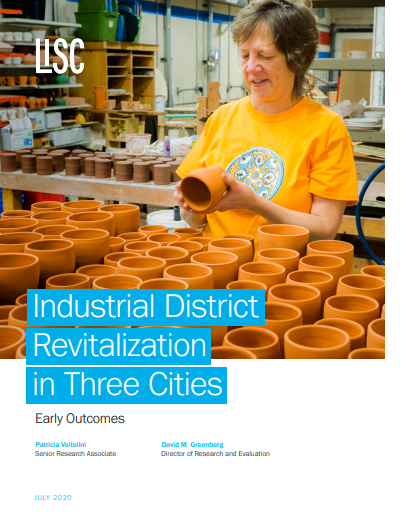Industrial District Revitalization in Three Cities
This white paper from LISC's Research & Evaluation team shows how LISC's ongoing work to support collaborative revitalization of industrial districts, in ways that promote equitable benefits for businesses and residents, helps bolster surrounding communities, even in the age of Covid-19.
Executive Summary
In a number of cities across the country, many long-disinvested industrial districts are experiencing a revival and in the process bringing opportunities for cities and surrounding communities. New or expanding industrial businesses generate new jobs, attract new workers, and increase demand for local products and services. Their investment in building and infrastructure helps improve neighborhood image and gives a sense of vitality to disinvested places, while bringing an increased tax base to cities.
However, the revitalization of industrial districts, like any other process of neighborhood change, may present challenges as new businesses may spark new uses and increase real estate cost, potentially triggering conflicts and gentrification pressures among residents or longtime businesses.
How can industrial districts revitalize in an equitable way, bringing benefits to surrounding lowincome communities and without triggering displacement of long-term businesses?
As a community development financial institution with a national footprint, LISC works with disinvested communities throughout the country, and in recent years has been increasingly involved in supporting industrial district revitalization efforts. To explore policies and practices that can promote more inclusive and equitable economic development, this paper examines revitalization efforts in Duluth, Indianapolis, and Jacksonville. The case studies below highlight LISC’s efforts in each city and are followed by a series of recommendations on how to achieve these equity goals.
